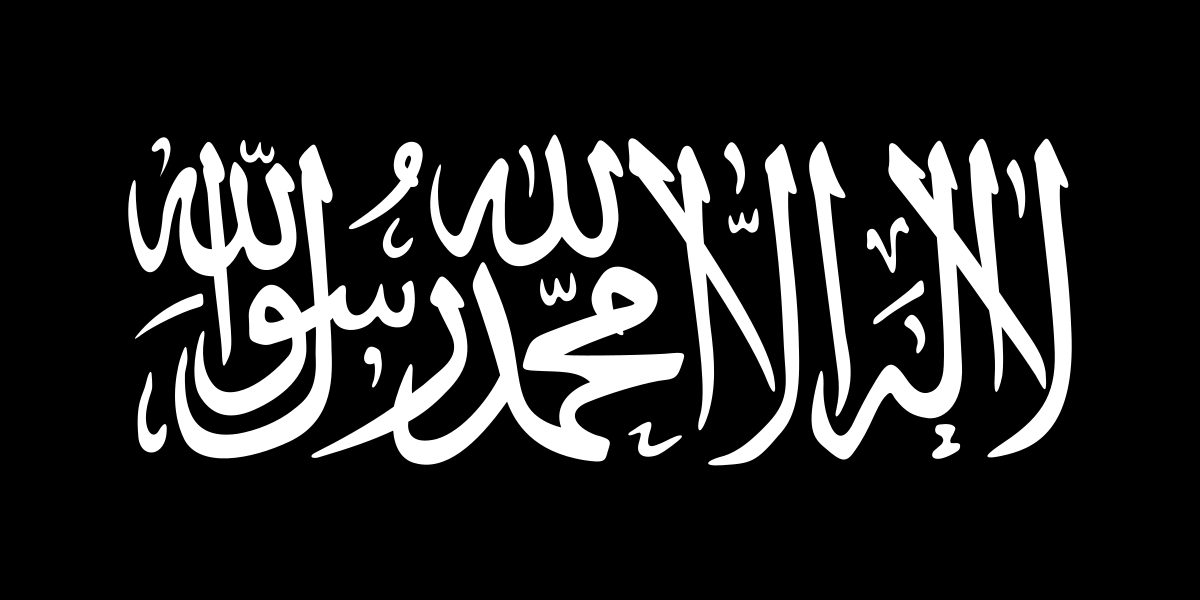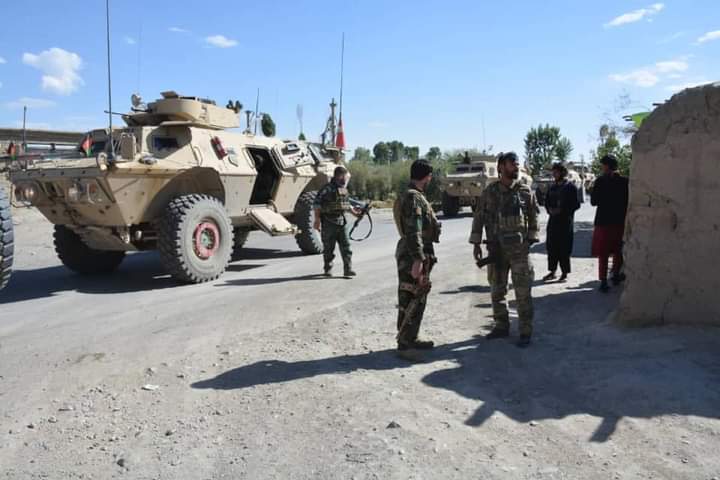India should stay vigilant as there are clear indications that the dreaded Al Qaeda is quietly recovering and making a comeback in Afghanistan.
While the world seems focussed on the ongoing efforts at negotiating with the Taliban over its promised role in an “inclusive” and “stable” government in Kabul after the US troops withdraw from Afghanistan, all indications are now available that Al Qaeda is quietly recovering its lost ground and making a comeback.
Not getting the attention it deserves, this development has ominous implications for South Asia in general and the Kashmir region in particular.
The recent arrest of four students from Kargil by Delhi Police in connection with the low-intensity IED blast near the Israeli embassy in the Indian capital on January 19 has rekindled the fear in this regard.
Al Qaeda’s Kashmir Link
That Al Qaeda in the Indian Subcontinent (AQIS) — one of the five major affiliates of the Al Qaeda [other four being Jabhat al-Nusrah in Syria; Al Qaeda in the Arabian Peninsula in Yemen; Al Shabaab in Somalia; and Al Qaeda in the Islamic Maghreb in North Africa] — has signaled its plans to focus on Kashmir is well-known in intelligence circles.
It may be noted that the announcement of the formation of the AQIS was made by Al-Qaeda leader Dr. Ayman al-Zawahiri in September 2014. But the group was not that active, particularly after the establishment of the Islamic State (IS) by the renegade Al-Qaeda Iraqi militia head Abu Bakr al-Baghdadi.
The IS announced its expansion to the Khorasan region in 2015, which historically encompasses parts of modern-day Iran, Central Asia, Afghanistan, and Pakistan and parts of India, including Kashmir.

This new country dreamt by al-Baghdadi was called the Islamic State Khorasan (IS-K), which subsequently declared to include Bangladesh, the Maldives and Sri Lanka as well.
It did attract many militant youths in Kashmir. But then with the killing of the al Baghdadi in 2019 and the subsequent decline of the IS, elements associated with the IS-K looked forward to the AQIS.
In any case, the book The Islamic State in Khorasan written by Antonio Giustozzi and published in 2018, has revealed that the IS-K was handled by the same ISI (Inter-Services Intelligence) of Pakistan, which was equally friendly with the Al Qaeda, that despite the known rivalry between al-Zawahiri and al-Baghdadi, IS-K and Al Qaeda or for that matter AQIS had good ties and that there was a very thin wall of separation between them.
US Intelligence Report
In their goal to establish an Islamic caliphate in the Indian subcontinent, many militants in Kashmir do support the broader goals of Al Qaeda’s central leadership. According to the US spy agency CIA, AQIS’s targets are military and security personnel, political parties, foreigners, foreign aid workers, university professors, students, and secular bloggers.
#Taliban fighters reached the gate of Mazar-e-Sharif, the largest city in the north of #Afghanistan, this afternoon, posing for photo. Govt says its forces pushed the insurgents away but the fact they can get to the gate of a major city so easily speaks a lot about the situation. pic.twitter.com/Vh2xistBZc
— Sharif Hassan (@MSharif1990) June 21, 2021
It uses small arms and improvised explosive devices (IEDs), as well as crude weapons such as machetes. It is believed to receive financial and material support from AQ senior leadership and also engages in kidnapping-for-ransom and extortion to raise funds. The terrorists’ activities in Kashmir display this pattern very well.
- Watch: The Ultimate Dogfight Between US & Russian Fighter Jets Over A ‘Top-Secret’ Air Base In Nevada
- Why India’s Ladakh Region Is Crucial For China’s Rise As An Economic Super-Power?
What may be ominous in this regard is the spurt of activities by Al Qaeda in the past few months, particularly since the US-brokered Doha declaration in February 2020 that lent legitimacy to the process of Taliban returning to power in Kabul. The declaration of the US troops’ withdrawal from Afghanistan has added further momentum to Al Qaeda’s revival.
In fact, Al Qaeda had welcomed the Doha deal, describing it as the “enemy acknowledging its defeat.” Its propaganda machinery had gone to the extent of portraying the Doha deal as “a watershed in the history of jihad”.
What is equally important is that the Taliban has not yet kept its promise at Doha (the basis of the proposed US troops withdrawal) to cut off ties with Al Qaeda and other militant groups. It has neither publicly renounced Al Qaeda nor taken any discernible action to limit Al Qaeda inside Afghanistan.
Taliban Playing Down Al-Qaeda Issue
In fact, since the deal, the Taliban’s representatives have conspicuously sidestepped even the mere mention of Al Qaeda when pressed to clarify their position on the group. On the contrary, privately they are reported to have pointed out that Al Qaeda is a group of “oppressed Muslim dissidents, forced out of their own countries because of their beliefs”.
On June 1, the Analytical Support and Sanctions Monitoring Team of the United Nations, in its 12th report, has observed: “the Taliban and Al Qaeda remain closely aligned and show no indication of breaking ties. Member States report no material change to this relationship, which has grown deeper as a consequence of personal bonds of marriage and shared partnership in struggle, now cemented through second generational ties.”

The report finds that Al Qaeda continues to operate under the Taliban umbrella. “Al Qaeda is resident in at least 15 Afghan provinces, primarily in the east, southern and south-eastern regions, and are led by Al Qaeda’s Jabhat-al-Nasr wing under the direction of Sheikh Mahmood,” it says, adding that “a significant part of Al Qaeda leadership remains based in the border region of Afghanistan and Pakistan, where the core is joined by and works closely with Al Qaeda in the Indian Subcontinent.”
Saying that, “Al Qaeda maintains contact with the Taliban but has minimized overt communications with Taliban leadership in an effort to ‘lie low’ and not jeopardize the Taliban’s diplomatic position vis-a-vis the Doha agreement,” the report suggests the member states to have “a longer-term Al Qaida core strategy of strategic patience for a period of time before it would seek to plan attacks against international targets again. This scenario is untested against stated Taliban commitments to prohibit such activities.”
US Sec Def Austin: #AlQaeda could regroup in #Afghanistan in 2 years https://t.co/UBYGezKqCa
— Aviator Anil Chopra (@Chopsyturvey) June 20, 2021
In this context, it has not perhaps properly highlighted how the Afghan official forces have been fighting the Al Qaeda forces over the past two months in the southern parts of the country, including Helmand province. The targets of the Afghan military operations include a “training center,” safe houses, the Taliban’s military liaison to Al Qaeda, and Al Qaeda soldiers.
The Afghan Air Force claims that last month it killed an Al Qaeda commander known as “Ali Punjabi” and “seven members of the Al Qaeda in the Indian Subcontinent network” in an airstrike. In a separate airstrike in Lashkar Gah, the provincial capital, on May 23, it killed Maulvi Atiqullah, who was described as being “in charge of coordinating terrorist activities with Al Qaeda and the Taliban’s deputy commander for the province.”
Atiqullah was known to be a member of the Taliban’s Red Unit, the Taliban’s version of Special Forces and shock troops
On May 24, the Afghan military wounded “Haji Ulfat, a key Al Qaeda in the Indian Subcontinent commander” and killed four fighters in a strike “in the Popalzo area of Khanshin district.” Several “hideouts of the Al Qaeda terrorist network” were also targeted, the Afghan Ministry of Defence (MoD) claimed.
Earlier in May, Afghan forces had conducted two other raids in Helmand, both in Nahr-e-Saraj district. One strike killed five AQIS fighters, and the other killed three more. The AQIS fighters killed in the second raid “were residents of Punjab [Pakistan] and mine-laying experts who had come to the province to teach mine-laying,” according to the Afghan MoD.
The AQ Network In Afghanistan
Some other studies show that the Al Qaeda cadres are present in other parts of Afghanistan as well. In March 2019, even the United Nations Security Council had identified Al Qaeda to be operating in 13 of Afghanistan’s 34 provinces.
Viewed thus, many analysts argue that although Al Qaeda was attenuated by personnel losses after IS poached large numbers of militants in various theatres where both organizations operated, under Ayman al-Zawahiri’s leadership it has managed to stay the course and worked to cultivate ties with potential recruits more focused on parochial grievances in select regions beset by civil conflict.
Afghan army says 13 al Qaeda members killed, key Taliban commander injured in airstrikes on their joint hideout in Khanshin district of Helmand province. pic.twitter.com/oWEAiUjQ82
— 1TVNewsAF (@1TVNewsAF) May 24, 2021
Overall, Al Qaeda remains a loose, overlapping, and fluid network across multiple regions. Despite his poor health, al-Zawahiri is its supreme leader. The aforesaid five affiliates, including the AQIS, owe allegiance to him.
In addition, the group retains an active relationship with groups across Africa, the Middle East, and Asia such as Ahrar al-Sham in Syria, the Taliban and Haqqani Network in Afghanistan, Tehreek-e-Taliban Pakistan in Pakistan, and Jamaat Nusrat al-Islam wal Muslimeen in the Maghreb and West Africa. In both the Horn of Africa and the Sahel, Al Qaeda-linked militants have strengthened their ties with the group’s central leadership.
In fact, Seth G. Jones, Director of the International Security and Defense Policy Center at RAND, writes that it is possible that Al Qaeda can always take advantage of the US troops withdrawal from Afghanistan and further revitalize itself if it manages to have a charismatic leader, preferably one of Osama bin Laden’s sons, Hamza bin Laden.
Read More
- At €7.8B, Why Indian Rafale Jets Are ‘Double The Cost’ Than Egyptian Rafales?
- Why Did Netizens ‘Mock’ Nigeria For JF-17 Deal With Pakistan?




